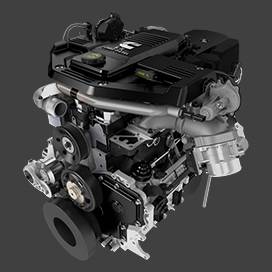Nov . 25, 2024 11:03 Back to list
Components of a Brake Drum and Their Functions in Vehicle Performance
Understanding the Parts of a Brake Drum
Brake drums are a vital component of many vehicles, particularly older models and certain types of trucks. They are part of the drum brake system, which plays a crucial role in a vehicle's braking performance, safety, and reliability. Understanding the various parts of a brake drum system is essential for vehicle owners, mechanics, and enthusiasts alike. This article will delve into the different components of a brake drum, their functions, and the importance of maintenance.
1. Brake Drum
At the heart of the drum brake system is the brake drum itself. This is a round metal component that is attached to the wheel hub. When a driver presses the brake pedal, the brake shoe assembly pushes outward against the inside surface of the brake drum. The friction generated between the shoes and the drum slows down the wheel, thereby reducing the vehicle's speed. Brake drums are typically made of cast iron or aluminum, offering durability and resistance to heat buildup during operation.
2. Brake Shoes
Brake shoes are the curved components that come into contact with the drum's inner surface. They are lined with brake linings, made from materials such as composite resin or asbestos (though asbestos is now largely banned due to health concerns). When the brake pedal is pressed, the brake shoes are forced outward and press against the drum, creating the necessary friction to bring the vehicle to a stop. Regular inspection and replacement of brake shoes are vital to ensure effective braking performance, as worn shoes can lead to decreased efficiency and potential drum damage.
3
. Wheel CylinderThe wheel cylinder is a hydraulic component of the drum brake system. When the brake pedal is engaged, hydraulic fluid from the master cylinder is directed into the wheel cylinder. This fluid causes the cylinder’s pistons to push the brake shoes outward against the drum. The wheel cylinder is typically located at the top of the brake assembly, and it is crucial for converting hydraulic pressure into mechanical force, enabling the braking action to occur. Regular maintenance includes checking for leaks and ensuring the proper operation of the wheel cylinder.
parts of brake drum

4. Springs
Springs are essential components of the brake drum assembly, serving multiple purposes. There are typically two types of springs return springs and hold-down springs. Return springs pull the brake shoes back into place when the brake pedal is released, ensuring they do not remain in contact with the drum when not engaged. Hold-down springs keep the shoes securely positioned within the assembly. Proper functionality of these springs is crucial; any malfunction can lead to incomplete brake disengagement or uneven wear of the brake material.
5. Adjuster Mechanism
The adjuster mechanism is responsible for maintaining the correct distance between the brake shoes and the drum. As the brake shoes wear down over time, the adjuster automatically compensates for the increased gap, ensuring that the shoes remain close to the drum for optimal braking performance. This mechanism typically consists of a threaded rod and a ratchet that allows for adjustments as the shoes wear. Regular inspection of the adjuster is important to avoid excessive braking distance and ensure accurate engagement.
6. Dust Shield
The dust shield, or backing plate, is a component that protects the brake assembly from dirt, moisture, and debris. It is positioned between the drum and the environment, providing a barrier that helps keep the braking components clean. A clean brake assembly is vital for efficient performance, as contaminants can lead to reduced braking efficacy and increased wear on brake parts.
Conclusion
Understanding the parts of a brake drum system is essential for maintaining vehicle safety and performance. Each component, from the brake drum itself to the wheel cylinder and springs, plays a specific role in ensuring that brakes function effectively. Regular maintenance and inspections can help identify worn or damaged parts, preventing potential brake failure and ensuring optimal vehicle performance. Whether you’re a car owner or a mechanic, a solid grasp of these components can lead to better decision-making regarding repairs and upkeep, ultimately leading to safer driving experiences.
-
Durable Brake Drum MAZ for Heavy Duty Trucks | High Performance
NewsAug.26,2025
-
FUWA: Premium Quality, Reliable Performance & Innovative Solutions
NewsAug.25,2025
-
Liza Brake Drum: Superior Quality & Performance for Safe Driving
NewsAug.24,2025
-
Iveco Brake Drum | Premium OE Quality for Daily & Eurocargo
NewsAug.22,2025
-
Your Brake Drum Man: Quality & Performance Parts
NewsAug.21,2025
-
Explore Japan: Ultimate Travel Guide & Authentic Experiences
NewsAug.19,2025
